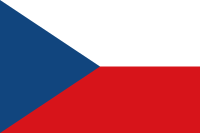
Photo from wikipedia
Abstract We explore the agroecosystem energy flows in two former communist countries, Czechia and Poland, in the two decades after the fall of the totalitarian regimes. Energetic agroecosystem productivity, i.e.,… Click to show full abstract
Abstract We explore the agroecosystem energy flows in two former communist countries, Czechia and Poland, in the two decades after the fall of the totalitarian regimes. Energetic agroecosystem productivity, i.e., the energy content of crops, livestock products per unit of area is compared to energy inputs, i.e., external inputs from society, i.e., labour, industrial inputs, and external biomass inputs and linked to land use change and demographic and economic changes. Using the social metabolism concept and the Material and Energy Flow Accounting method, our analysis looks at the system from a biophysical perspective and explores the interactions between the economic system and nature. We calculate the Energy Return On Investment (EROI) indicators and also present an easily understandable index for policy makers, the Input/Output Index. After the end of communism in both countries in 1989, they both joined the EU in 2004. Along with this, both states started the integration towards a global economy. Our main research questions are 1) to what extent does the development of the energy flows and energy efficiency depend on the political organisation and the socioeconomic conditions and 2) if it follows rather more general trends or if it depends on the socioeconomic structure of the agricultural system. In the first decade immediately after 1990, the agricultural production radically slumped in both countries together with an overall slowdown of the economic performance. The production started to grow again and stabilised in the second decade mainly due to joining the EU in 2004. The integration to the global markets raised the volume of trade by a factor of 5 in Czechia and 10 in Poland. The number of agricultural workers decreased 1/3 in both countries over the whole period. Also, the cropland has been decreasing in both countries by about 20% and production has concentrated to more fertile areas, while the abandonment of agricultural area occurred mainly in less favoured areas. Both agricultural systems underwent structural changes in respect of change of ownership, economic conditions and subsequently the structure of production. Recently, the crops of economic significance dominate and Czechia exports raw materials as e.g., cereals and oil crops, and imports mainly fruits, vegetables and processed food. Poland has become an important producer and exporter of agricultural products in Europe (fruits, meat). But this is rather an issue of scale than of gaining efficiency. Poland is less efficient in the case of its share of inputs per outputs of energy flows with 21% while Czechia is 17%. Final EROI is stable in both countries. In Czechia, it is slightly improving from 0.6 in 1993 to 1 in 2012, while in Poland, the FEROI is stagnating around 0.6. The External Final EROI has slightly improved in Czechia from 2.8 to 3.8, while in Poland, it has been continuously decreasing from 2.6 to 2.2. The Internal Final EROI shows a declining share of the biomass reused in Czechia: from 0.8 to 1.4, while keeping its volumes in Poland at the value of 0.8.
Journal Title: Land Use Policy
Year Published: 2019
Link to full text (if available)
Share on Social Media: Sign Up to like & get
recommendations!